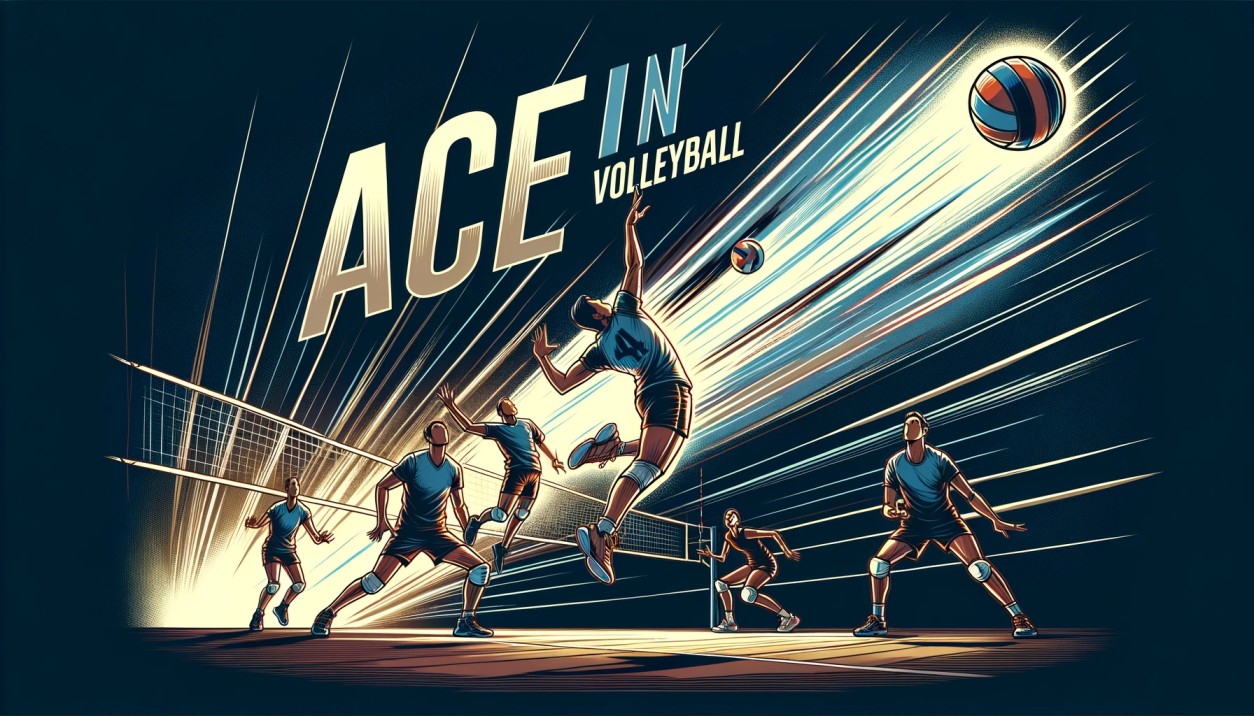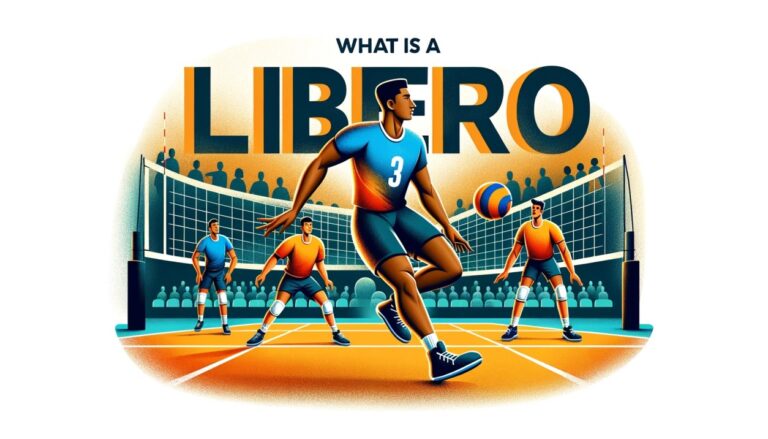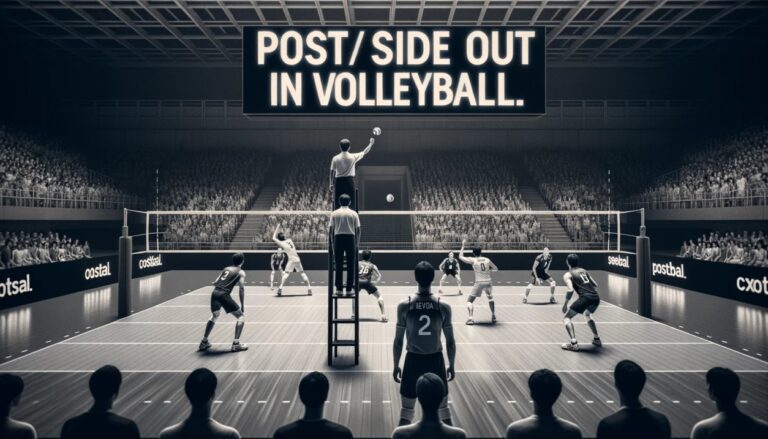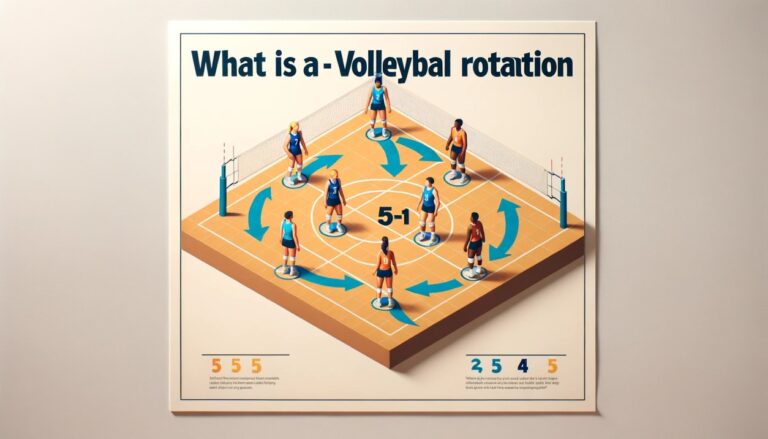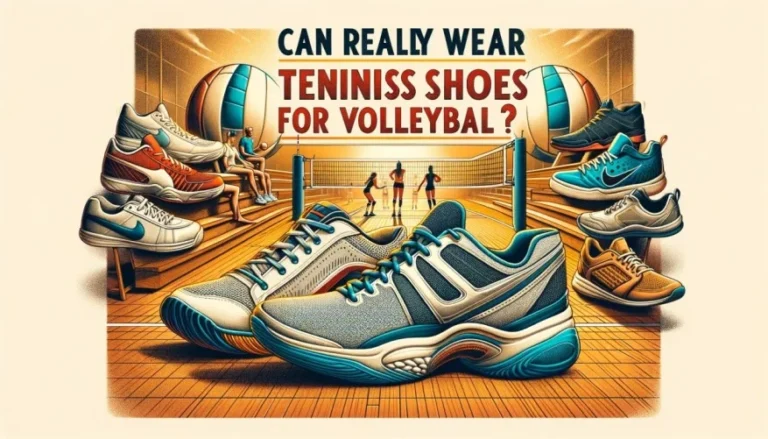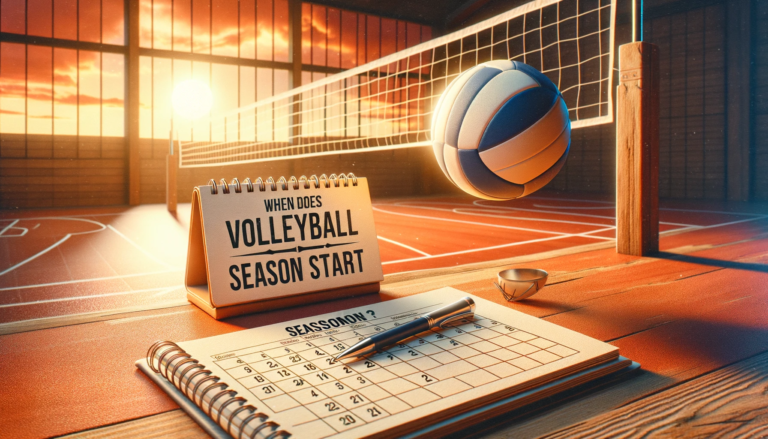Ace in Volleyball: Your Complete Guide
Introduction
In this article, complete information about Ace in volleyball is given. There’s a unique thrill in volleyball, one that comes from serving a ball that no opponent can return. This is the essence of an ace. But what exactly is an ace, and why is it so pivotal in the game of volleyball? Let’s dive in.
Historical Background of the Ace in Volleyball
- Origin of the term: The term “ace” in sports often refers to a masterful play, and in volleyball, it’s no different. Historically, an ace was a serve that the opponent couldn’t touch, making the server feel like they had played a master stroke.
- Evolution of the ace serve in professional volleyball: As volleyball evolved, so did the techniques and strategies. The ace serve, once a rarity, became a weapon in the arsenal of professional players. With the introduction of powerful jump serves and deceptive float serves, the frequency and impact of aces in high-level matches grew exponentially.
Technical Breakdown of an Ace in Volleyball
- Definition and criteria: An ace in volleyball is a serve that results directly in a point, typically because it’s not touched by any opponent or because the receiving player fails to send it back correctly. It’s the epitome of a perfect serve.
- Differences between an ace and a regular serve:
- An ace leads directly to a point for the serving team.
- A regular serve, even if strong, might still be returned by the opponent, leading to a rally.
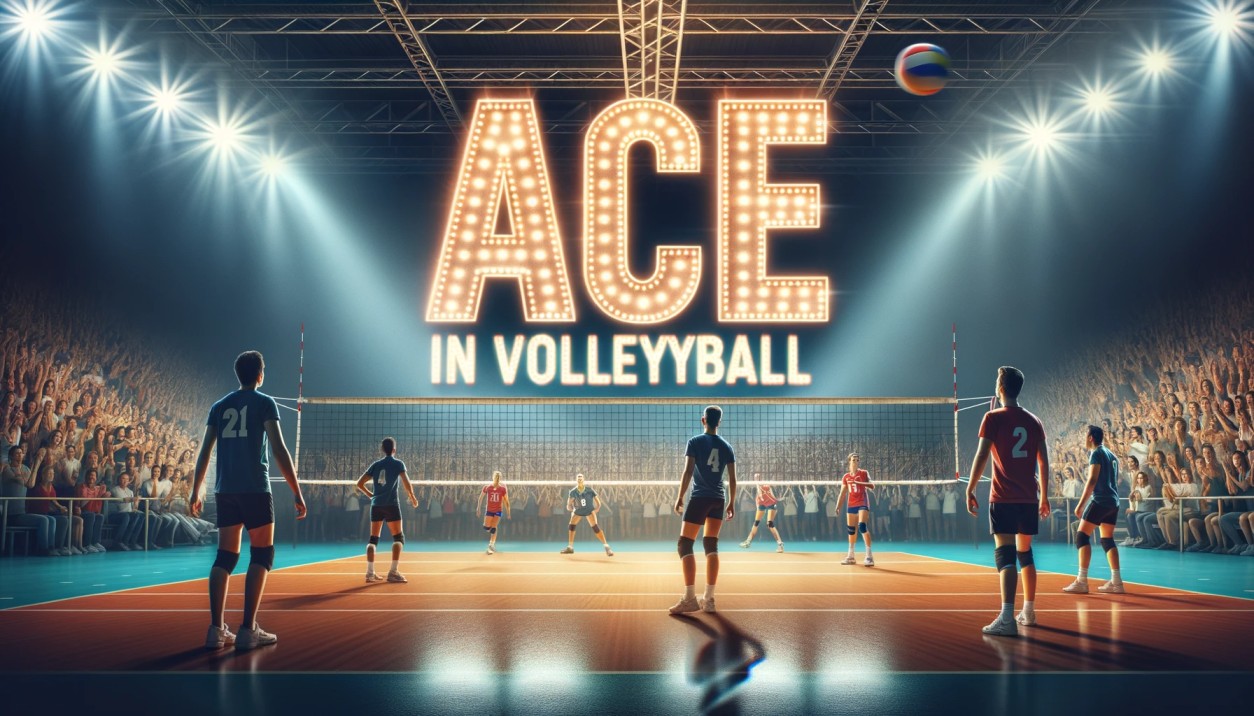
Importance of Acing in Matches
- Psychological advantage: Landing an ace isn’t just about the point on the scoreboard. It’s a psychological blow to the opponents. It boosts the morale of the serving team while potentially demoralizing the receiving team.
- Scoring and game dynamics: In volleyball, every point counts. Aces:
- Can be game-changers in tight matches.
- Offer teams a chance to break away in terms of score.
- Can shift momentum, especially in crucial moments of a match.
In the world of volleyball, the ace is more than just a serve. It’s a statement, a strategy, and sometimes, the difference between victory and defeat.
Techniques to Serve an Ace
Volleyball isn’t just about power; it’s about technique. When it comes to serving an ace, there are several methods to master:
- Float Serve: This serve is all about deceiving the opponent. The ball doesn’t spin, making its trajectory unpredictable.
- Tip: Focus on a clean contact with the ball, hitting it with the heel of your palm.
- Jump Serve: A powerful and aggressive serve, where the server tosses the ball high, jumps, and strikes it mid-air.
- Tip: Timing is crucial. Ensure your jump and arm swing are synchronized.
- Spin Serve: As the name suggests, this serve has a lot of spins, making it curve in the air.
- Tip: Snap your wrist upon contact to generate the necessary spin.
Common Mistakes and How to Avoid Them
Even the best make mistakes, but it’s learning from them that counts:
- Overpowering the serve: More power doesn’t always mean a better serve.
- Solution: Focus on control and placement over sheer force.
- Misjudging the court boundaries: Serving out gives a free point to the opponent.
- Solution: Regularly practice serves aiming for different parts of the court.
- Not observing the opponents’ formation: A good server exploits gaps in the opposition’s formation.
- Solution: Before serving, take a moment to scan the court and spot vulnerabilities.
Two Common Types
In volleyball, an ace is a serve that results directly in a point. The receiving team either fails to touch the ball or is unable to return it. There are two common types of aces:
- No Touch Ace: This is when the ball lands in the opponent’s court without anyone touching it. It’s the most straightforward kind of ace, showcasing the server’s accuracy and power.
- A Regular Ace: This occurs when the ball is touched by one or more players on the receiving team, but they fail to return it properly, resulting in a point for the serving team.
4 Tips For Improving At Serving Aces
To become a master server and increase your chances of serving aces, consider the following tips:
- Aim For the Edges: By targeting the edges of the court, you can make it difficult for the receiving team to predict and handle your serve.
- Target Weak Passers: If you’ve identified a player struggling with receptions, aim your serves at them to exploit their weakness.
- Mix Up the Serve: Keep the opposition guessing by varying the speed, spin, and direction of your serves.
- Practice: Like any skill, the more you practice serving, the better you’ll become. Dedicate time to refining your technique and consistency.
My Top 3 Examples Of Volleyball Aces
To understand the art of the ace, here are three exemplary instances from international matches:
- Ivan Zaytsev: Italy vs USA 2014 – Zaytsev’s powerful serve left the American receivers stunned.
- Yuji Nishida: Japan vs Canada 2019 – Nishida’s precision and speed were unmatched in this particular serve.
- Kyle Russell: V-League 2022 – Russell showcased a blend of technique and power, making it impossible for the opposition to return.
FAQs
What’s the difference between a service winner and an ace?
An ace is when the opponent doesn’t touch the ball at all. A service winner is when the opponent touches the ball, but it doesn’t result in a playable return.
How is an ace recorded in statistics?
An ace is typically marked as an “A” in the stat sheet, contributing to a player’s serving stats.
Can an ace be challenged in professional volleyball?
Yes, with the advent of technology, teams can challenge if they believe the serve was out or if there was a net touch.
What’s the fastest ace ever recorded?
The speed of aces can vary across different levels of play, but in professional settings, serves can reach speeds of over 70 mph!
· Is there an ace player in volleyball?
- In volleyball terminology, an “ace” refers to a serve that the receiving team cannot return, resulting in a point for the serving team. However, the term “ace player” is not standard in volleyball.
In some contexts, especially in anime like “Haikyuu!!”, the term “ace” can refer to the team’s primary attacker or best spiker.
· What is ace in Haikyuu?
- In “Haikyuu!!”, an “ace” refers to the team’s primary attacker or best spiker. The ace is often the player the team relies on to score points through powerful and effective spikes.
-
How many aces is good in volleyball?
-
- The number of aces that is considered “good” can vary based on the level of play and the length of the match. In professional volleyball, having several aces in a match can be seen as a strong performance for a server.
-
Is an ace or point-winning serve in volleyball?
-
- Yes, an “ace” in volleyball is a serve that results directly in a point because the receiving team cannot return it.
-
Does Hinata become the ace?
-
- In “Haikyuu!!”, Hinata Shoyo aspires to become a great volleyball player and shows significant growth throughout the series. While he is not the official “ace” of Karasuno High during his high school years (that title belongs to Asahi Azumane), Hinata demonstrates qualities and skills of an ace.
- In the manga’s continuation, Hinata continues to develop his skills and plays a prominent role in his teams.
-
What are spikers called in volleyball?
-
- In volleyball, players who attack the ball to send it over the net to the opponent’s side with force are called “spikers” or “hitters” or “attackers.”
-
How many points is an ace in volleyball?
-
- An ace in volleyball is worth one point.
-
What are kills in volleyball?
-
- A “kill” in volleyball is a successful attack that results in a point. It’s when a player spikes the ball, and it either lands on the opponent’s court or is deflected off an opponent and goes out of play.
-
Is it an ace if they touch it?
-
- In traditional volleyball terminology, an ace is a serve that the receiving team cannot return, resulting in a point. If the ball is touched by the opponent but still results in a point (because they couldn’t play it properly), it’s often considered a “service winner” rather than a pure ace.
-
What is position 7 in volleyball?
- In volleyball, there aren’t positions labeled up to “7.” The positions on a volleyball court are labeled from 1 to 6, starting from the right-back position and moving clockwise.
· Is libero a hitter?
- No, the libero is a specialist in defensive skills, especially receiving serves and digging (defending against) attacks from opponents. They cannot attack the ball above the net’s height and cannot serve, block, or attempt to block.
· What is libero?
-
- The libero is a defensive specialist in volleyball. They wear a different color jersey and cannot attack the ball above the net’s height. They also cannot serve, block, or attempt to block. The libero can replace any back-row player without prior notice to the officials. The role was introduced to the game to enhance the defensive aspects of the sport.
-
A “Return Ace”: What Does This Mean?
-
- A “Return Ace” isn’t a standard term in volleyball. However, in some contexts, it might refer to a situation where a player’s return (or attack) is so powerful or well-placed that the opposing team can’t handle it, resulting in a point. It’s similar to an ace but occurs during regular play rather than from a serve.
-
What Does NOT Count As An Ace in Volleyball?
-
- An ace is specifically a point scored from a serve. If the serving team commits a fault (like stepping on the baseline or serving out of rotation), or if the ball lands out of bounds without being touched, it’s not considered an ace.
-
How Often Do Aces Occur In A Volleyball Match?
-
- The frequency of aces varies depending on the level of play and the players involved. In professional matches, players have refined their serving and receiving techniques, so aces might be less common. However, when they do occur, they’re a testament to the server’s skill.
-
Who Earns The Ace In Volleyball?
-
- The player who serves the ball and scores directly from that serve earns the ace.
-
What Is A Good Ace Percentage In Volley?
- A good ace percentage can vary based on the level of play. In professional volleyball, an ace percentage above 10% is considered very good. However, it’s essential to balance aces with service errors. A player might have a high ace percentage but also a high error rate, which could be detrimental to the team.
Tips from the Pros
Every professional player has their secret sauce. Here are some insights:
- Insights from professional players: Many pros emphasize the importance of a consistent routine before serving. This helps in calming the nerves and focusing on the serve.
- Training routines to improve ace serves:
- Practice different serves under varying conditions.
- Work on strengthening the serving arm and improving wrist flexibility.
Conclusion
The ace is more than just a point in volleyball; it’s a testament to a player’s skill, precision, and strategy. While mastering it requires dedication, the joy of seeing the ball land untouched on the other side is unparalleled. So, to all the aspiring volleyball champions out there, keep practicing, keep refining, and let those aces fly!
